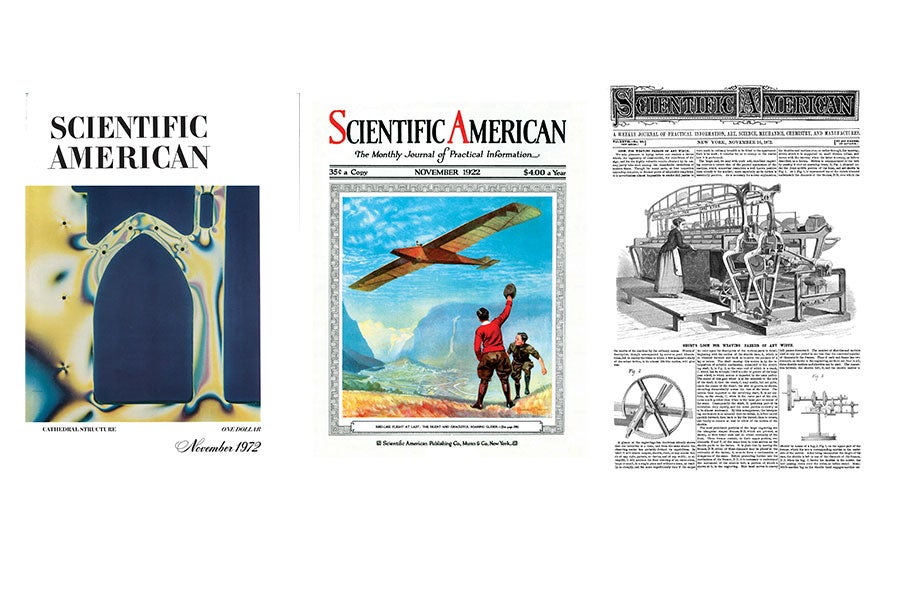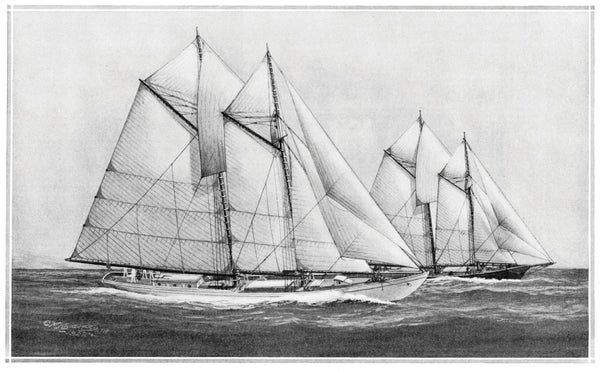1972
Sunlight on Venus
“Additional knowledge about the cloudy planet Venus has been gathered by the Russian space probe Venus 8, which made a soft landing in July. One of the debates about Venus was whether or not its cloud cover was so thick that sunlight would not penetrate to the surface. Venus 8 carried a photometer that gave readings as the probe parachuted through the atmosphere for nearly an hour before landing. The photometer showed that sunlight is greatly attenuated by the atmosphere, but some sunlight does manage to penetrate to the surface.”
On supporting science journalism
If you're enjoying this article, consider supporting our award-winning journalism by subscribing. By purchasing a subscription you are helping to ensure the future of impactful stories about the discoveries and ideas shaping our world today.
1922
Movie Wheels Turn Backwards
“Everyone has noticed at the movies the optical illusion whereby the wheels of an auto appear to turn backwards, while the auto is going forward. The phenomenon is a special case of the ‘persistence of image’ on which the movies depend. If the wheel revolves at such a rate as to bring each spoke into the position occupied by another spoke in the preceding [frame], the wheel will appear to stand still. If the distance moved is less than half the angular distance between the spokes, the wheel will appear to revolve normally. But if the distance is more than this, say, three-quarters the angular distance between the spokes, then an illusion of backward motion is produced. The eye connects each spoke with the spoke which, in the previous image, was nearest to its present position. If a wheel has spokes differing in shape or color, the eye cannot confound them, and no illusion is produced; the illusion happens only when the spokes are identical.”
Made in America for China
“The intelligent manufacturer in this country realizes that future prosperity lies largely in export trade. Unquestionably China offers an opportunity that is unique. The Republic of China is more than twice as large as the United States, and its population is four times as great. There are practical opportunities in China for the sale of nearly all American commodities.”
In 2021 the U.S. trade deficit in goods with China was more than $353 billion.
Regulate Airplanes Like Cars
“The frequency of airplane accidents has had a depressing effect upon the development of commercial aviation. It was not until the public realized that the automobile was reliable and could be controlled by any intelligent person, that the motor car began to make rapid headway. What we need is a law with clauses calling for the periodical inspection of [airplanes], and for the rigid licensing of pilots. Today, anyone who has the money can buy an airplane, fly it, and invite people to go up; and to this situation many of the accidents must be charged. If no one can drive a motor car without a State license, why in the name of common sense should it be possible to engage in the far more difficult practice of aviation, without the slightest governmental control?”
1872
Tattoos Color the Cornea
“Dr. R. J. Levis, of the Pennsylvania Hospital, has devised a means of coloring opacities in the cornea. The instrument used is a bundle of from three to six very fine sewing needles. Ordinary water pigments are used, rubbed to a pasty consistence and mixed with a little glycerin. For the black of the pupil, Indian ink is employed. The paint is applied thickly over the opaque spot. The needle points are made to penetrate repeatedly and rapidly in varying directions, until much of the opaque surface is gone over. Two or more repetitions of the process are required. The operation is said to be painless, and as the coloring matter is tattooed into the tissues, it cannot be washed out by tears.”
Windmills Galore
“One hundred and twenty-one patents have been granted on windmills in the United States since 1854.”
Mosquito Repellent
“A. D. Breazele of Alabama has patented a mosquito frightener composed of the following formidable ingredients: Oils of [the plants] pennyroyal, savin, origanum, terebinthe and sassafras; tinctures of lavender, chloroform and arnica; gum camphor, niter [potassium nitrate], alcohol and kerosene oil. If the Alabama mosquitoes can stand such a preparation, the only remaining thing to be done is to set mouse traps to catch them.”

